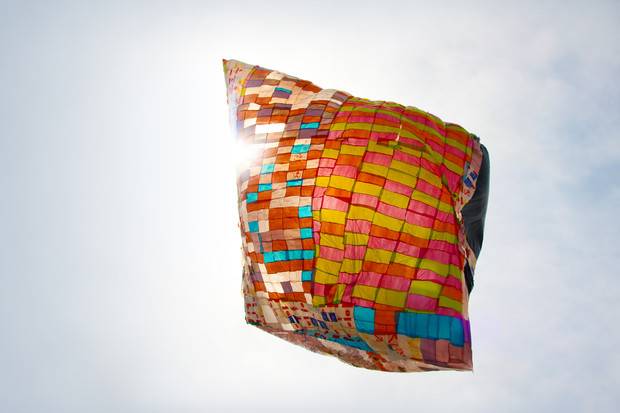Write Your Emails with Albert Einstein’s Calligraphy
While the days of handwriting seem to be numbered, this project allows us to feel nostalgic for the movement of a hand across a sheet of paper.
Einstein, luckily, had a great sense of humor, but he would never have imagined what the 100th anniversary of his theory of relativity would have prepared for him. A typographer and scientist are about to complete a laborious project that began in 2009 in which they are seeking to emulate his handwriting in a digital interface.
Yes, now we can send emails in the turbulent and elegant handwriting of Albert Einstein. The task, of course, was not easy. In order to achieve this, the researchers consulted hundreds and hundreds of manuscript pages in the Einstein archives during six months. With a stylus pen, the typographer Harald Geisler wrote samples again and again until he developed an intuition, an intimacy perhaps, with the letters of the Nobel Prize winner.
This kind of project is not new (there are fonts similar to those of Cézanne, Picasso, Michelangelo and even Obama already available), but Einstein’s typeface has an interesting additional aspect: each letter will have at least four variations, similar to the way in which we write by hand. Because no two pages of manuscript have identical letters: handwriting depends on the mood of the person, their haste, or the type of ink they use.

The paradox of typing in a handwritten font was not wasted on the creators of the project, which led to fascinating questions such as whether the act of thinking is related to the movement of the hand as one writes or whether typing has substituted that relationship. We know there are no rules, that there is no logic that defines the relationship between intelligence and the motor control over our limbs (think about the illegible handwriting of doctors), but there is a relationship between the body and creative thinking. And Einstein, curiously, had beautiful handwriting.

This font, in addition to being a tribute to the world’s most-loved genius, is also an opportunity for discussion regarding the aesthetics of handwriting in the digital era, in which we write down our thoughts in Helvética, Times New Roman or Garamond. The era of handwriting and calligraphy is facing extinction; perhaps the next generation will not go through the relevant process of finding their own handwriting style, and this kind of project helps to highlight that lacking. Perhaps the mere fact of writing an email with the attraction of paper and pen, while emulating the handwriting of someone who changed the world with their scribbled notes, is a motive to make that a reality.
Related Articles
When ancient rituals became religion
The emergence of religions irreversibly changed the history of humanity. It’s therefore essential to ask when and how did ancient peoples’ rituals become organized systems of thought, each with their
Seven ancient maps of the Americas
A map is not the territory. —Alfred Korzybski Maps are never merely maps. They’re human projections, metaphors in which we find both the geographical and the imaginary. The cases of ghost islands
An artist crochets a perfect skeleton and internal organs
Shanell Papp is a skilled textile and crochet artist. She spent four long months crocheting a life-size skeleton in wool. She then filled it in with the organs of the human body in an act as patient
A musical tribute to maps
A sequence of sounds, rhythms, melodies and silences: music is a most primitive art, the most essential, and the most powerful of all languages. Its capacity is not limited to the (hardly trivial)
The enchantment of 17th-century optics
The sense of sight is perhaps one the imagination’s most prolific masters. That is why humankind has been fascinated and bewitched by optics and their possibilities for centuries. Like the heart, the
Would you found your own micro-nation? These eccentric examples show how easy it can be
Founding a country is, in some ways, a simple task. It is enough to manifest its existence and the motives for creating a new political entity. At least that is what has been demonstrated by the
Wondrous crossings: the galaxy caves of New Zealand
Often, the most extraordinary phenomena are “jealous of themselves” ––and they happen where the human eye cannot enjoy them. However, they can be discovered, and when we do find them we experience a
Think you have strange reading habits? Wait until you've seen how Mcluhan reads
We often forget or neglect to think about the infinite circumstances that are condensed in the acts that we consider habitual. Using a fork to eat, for example, or walking down the street and being
The sky is calling us, a love letter to the cosmos (video)
We once dreamt of open sails and Open seas We once dreamt of new frontiers and New lands Are we still a brave people? We must not forget that the very stars we see nowadays are the same stars and
The sister you always wanted (but made into a crystal chandelier)
Lucas Maassen always wanted to have a sister. And after 36 years he finally procured one, except, as strange as it may sound, in the shape of a chandelier. Maassen, a Dutch designer, asked the










